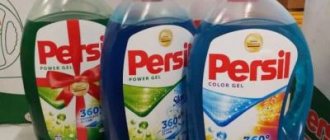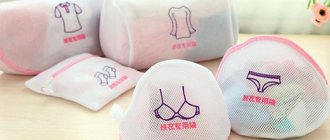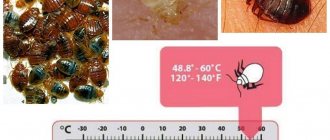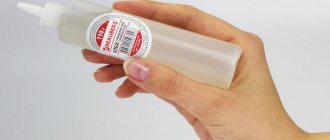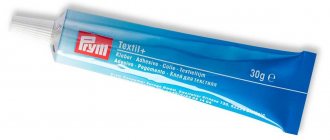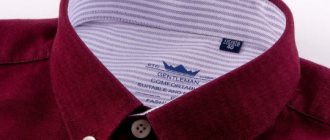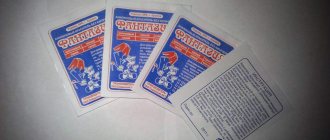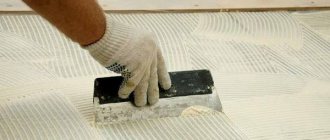Often fabric products need repairs, hemming, etc. Thread stitching is not always appropriate, as it can spoil the appearance of the finished product and looks rough on light fabric. To perform such work, a glue web will help, which can easily correct the situation without being noticed. Before using it, you need to study the instructions for gluing it and take into account some tips.
What it is
Glue webs are strings of glue. Bonding of fabric surfaces occurs by heating the fabric, as a result of which the glue threads, melting, penetrate into the structure of the fabric and glue it together. They act as secret machines, which are designed for hidden fastening of fabric, but only the adhesive option is cheaper, since it does not require additional equipment.
Cobweb for fabric is produced in rolls. One such roll is enough for long-term use at home.
Finishing the edges of a garment
If you don't know how to use glue web, read this article until the end. We will reveal all the nuances of working with it. You can hem the bottom of some fabrics using just one iron. You don't need a sewing machine. After all, the edges of the product can be glued. How to do this quickly and correctly? Use glue web.
It is selected according to the width of the hem. Then proceed as follows: the tape is placed on the fabric, rolled up and ironed with a moderately heated iron. Gluing occurs instantly, so you need to make sure that there is no displacement or skew. This method is applicable for processing the bottom of skirts, trousers, dresses, sundresses, shorts, and tunics. In some cases, this is the only possible option, since the seam does not always look neat, especially on thin or lace fabrics.
Where is the web used?
Glue web for fabric is widely used in repairs and making clothing from fabric:
- Connecting parts of the collar and cuffs.
- Processing the bottom of the trousers.
- Connecting the bead and hem instead of shuttle stitching using a blind machine, since the model does not provide for the application of thread seams.
- Elimination of cuts in fabric material.
- Connecting a patch or appliqué to the surface of an item.
- Side seal.
Gossamer tape is not used on everyday clothes, as it is often washed, which adversely affects the quality of gluing, resulting in detachment of the joint.
View this post on Instagram
A post shared by Anya's FABRICS? (@be_be_chic) on Mar 1, 2022 at 8:40pm PST
What is a glue web and why is it needed?
Non-woven tape for clothing is necessary for gluing parts. Cobwebs are sold in rolls, the price is not at all high. One roll will last for a long time. In the 90s of the 20th century, they did not skimp on hidden seams and stitching overlocks. Gossamer does the same thing, just with glue, and is much cheaper.
What does the material look like?
Of course, instead of gossamer or overlock, you can make a regular shuttle stitch.
The advantage of gossamer tape for gluing fabric is that it is safe for health and does not contain chemicals or toxins.
The thinnest, 0.8 cm
It also does not accumulate static electricity and has a very low price. But it also has a number of disadvantages. Due to the fact that the material is very thin, it can be easily torn. Relatively short-lived during use. It quickly loses its functions, so you have to add additional tape.
Where is the web used?
Every woman should have adhesive tape for fabric in stock; it can come in handy in different situations. The most common uses: when it is necessary to hem the bottom of an item, but there is no way to hem it; if there is a cut on the material, and it is necessary to carefully glue it inside so that the fabric does not come apart; if you need to stick a small patch or decoration on an item; when it is necessary to compact the side; if you need to attach certain jewelry to clothes; You can easily shorten curtains without using a machine.
You may be interested in this Review of programs that will help you create a pattern for clothing
Work process
Why duplicate parts of outerwear
The parts must be duplicated for the reliability of the fabric.
- To give shape to a product (jacket, sweater);
- Maintain shape when worn (jackets, sweaters);
- Protection against stretching;
- Giving durability to the material;
- Increase fabric elasticity.
What types of adhesive tape are there?
Adhesive tape is produced in two types:
- paper based;
- without paper backing.
The first option is a paper strip up to 2 centimeters wide, wound into a roll, with adhesive strips in the shape of a diamond applied on the side.
The second option is represented by a dry adhesive strip up to 2 centimeters wide, also wound into a roll.
Paperless base is difficult to use, as there is a possibility of inaccurate application.
There is no need to buy two options; to get a paperless option, just separate the glue from the paper by unscrewing the edge of the paper base.
We have a curtain that needs hemming, and two ways to do it without a sewing machine
The first method is suitable for heavy, opaque material, and today designers, using Velcro, offer not only to decorate attic curtains and gather the bottom of heavy curtains, but also to radically change the height of the curtain.
Many people know that in harsh climates it is good when the curtain is higher than the level of the radiator; this helps save energy and seriously increases the air temperature in the room. And almost everyone knows that when it’s hot and sunny, a thick curtain helps keep the room cool.
It is Velcro that helps adjust the height of the curtain from the floor level to the window sill level, and you shouldn’t think that this is a crazy idea. The Velcro fastener is not visible from the outside, and with the help of this tape you can assemble the curtains into a very beautiful window frame.
However, there are several problems with this tape:
- Self-adhesive bases constantly experience “tension stress”, and after a dozen washes the tape may fail.
- The open part of the belt will quickly become dusty, which will significantly reduce the adhesion properties of the belt.
- Cleaning this fastener is quite a labor-intensive operation.
Solving this problem is quite simple:
- Apply excess tape (it is sold in a roll and always with a reserve) to the free area. When you need it, “re-stick” (excuse the word) the excess onto the vacant section of the tape;
- To clean the dirty part of the tape, use ordinary office tape with a small width. It is enough to glue it, press it lightly with your finger, heat it a little (for example, with a hairdryer) and peel it off. After such an operation, Velcro will work like new;
- For heavy fabrics, a radical solution is needed - stitching. Here you need to understand that the total thickness of the Velcro fastener should be greater than the thickness of the curtain. Otherwise, the adhesive layer simply will not withstand the loads.
In other words, “Velcro” is a great way to decorate a window exactly the way you want, but it is worth considering that such Velcro is designed for a small pull-off force that is accessible to a child. And children are precisely the factor that can ruin any interior. But there is a second method, more labor-intensive, but more reliable.
What glue is suitable
Not all adhesives are suitable for working with fabrics. In addition, you need to use them correctly. Several variants:
- When working with rubber-based glue, it must be applied on both sides, which increases the drying time and requires a weight for a tight connection.
- Nitrocellulose compositions are applied unilaterally, the parts are connected immediately, only dense elements are connected under pressure.
- PVA glue connects when applied on both sides; a weight is needed for adhesion.
- Rod silicone glue, which is applied with a special heating gun, since it requires heating, does not flow, and quickly polymerizes.
Examples of adhesives that are available in every store:
- Fabric glue “Secunda” has a transparent consistency of medium viscosity, no odor, no stains after drying, and ensures water resistance of the joint.
- “Liquid thread” - suitable for combining materials, gluing decorations, is transparent, dries quickly, and does not damage the fabric.
- JAVANA - made on a water basis, after drying it forms a transparent connection, does not spoil the fabric, does not leave marks, the clothing remains completely flexible at the place of gluing.
When purchasing adhesive mass, you need to take it into account:
- resistance to heat treatments;
- possibility of frequent washing of the processed product;
- seam elasticity;
- high-quality fastening;
- versatility;
- relatively quick setting, the ability to adjust the product.
How to glue cobwebs onto fabric: detailed instructions
When gluing the tape to the material, you must follow the instructions:
- The clothing is ironed at the gluing site to ensure even distribution of the adhesive strips.
- The strip is applied to the back of the element and smoothed from above with a heated iron. When exposed to heat, the glue begins to melt. The iron is drawn to the end of the strip, the excess is cut off.
- After tightly gluing, the top paper layer is removed. A diamond adhesive pattern remains on the material.
- The element to be glued is placed on top of the glue, with the wrong side down. This is done with an iron in the same way as in the beginning. When heated, the glue melts and penetrates the structure of both fabrics, bonding them together.
If the glue diamonds do not attach well to the fabric, it is recommended to spray the material with a spray bottle and carry out the procedure again with an iron.
Useful video on the topic:
Terms of use
Different hot-melt adhesive tapes differ in their technology of application, but in any case, the web must be glued to the fabric by activating the adhesive layer. When heated, it melts, penetrates into the structure of adjacent tissues, and when it hardens, it glues them together. If the temperature is too high, the glue will penetrate too deeply into the fabric and gluing will be difficult or impossible. The operation will need to be repeated, but with a less hot iron.
If the web is used on thin fabric, then it should be remembered that it will give the fabric a certain rigidity, which may be unnecessary.
Preparatory work
Before gluing the web onto the fabric with an iron, you should practice on unnecessary pieces of material. When the control sample has no flaws, you can move on to gluing the clothing parts.
The gluing process step by step
Let's consider an example when, using a paper adhesive web for fabric, you need to glue the back to back. This is a standard situation, although there are other rarer cases, but the principle is similar.
- First, a web of the required size must be applied to the back of the part and passed over the paper with a hot iron (the adhesive surface is at the bottom). To make the fold softer, the tape is placed at a distance of 0.5 cm to the same fold line. The heat causes the glue to melt and stick the web to the fabric. If you fail to glue it the first time, you should try again. But before this, the web must be moistened by sprinkling water from a spray bottle on it, and then again using a hot iron.
- The second stage begins with peeling off the paper. This is done carefully so as not to be pulled away along with the adhesive part. Afterwards, you can see a glued mesh strip on the inside in the desired location.
- The next step is to glue the part. It is placed with the wrong side on the adhesive strip and the final ironing is carried out. Again, the glue melts and the two fabrics stick together. If necessary, the working area is sprayed with water and again carried out with a hot iron.
With a paper web, all the described steps are easier to complete. As for the usual version, it is placed between precisely laid out parts, after which they are well ironed. A cobweb without paper is difficult to insert, for example, into the collar of a product. Such an operation requires a more scrupulous approach. Even professionals do not always cope with such tasks.
Author:
Anastasia Kukushkina
I hope you enjoy the article I have prepared for you! If you find errors in it, write to me about it! I will answer any questions you have, ask them!
